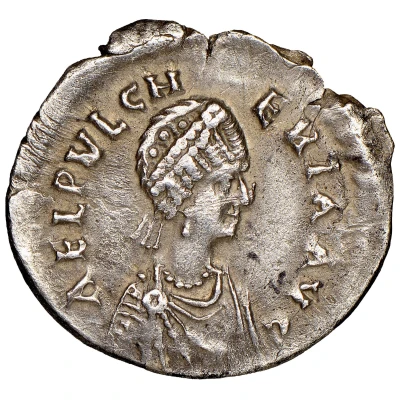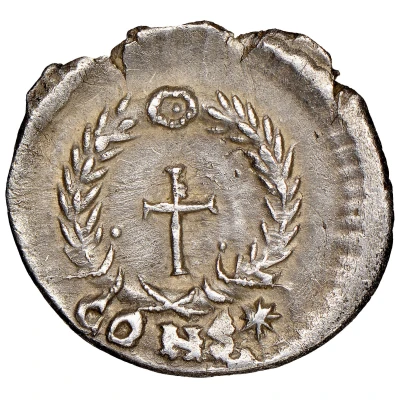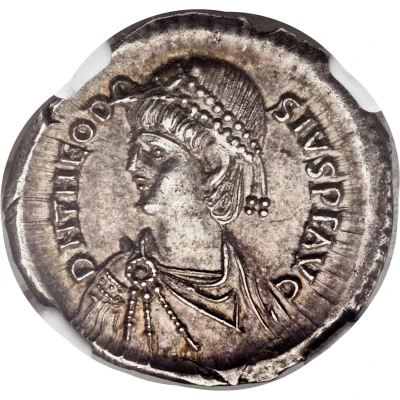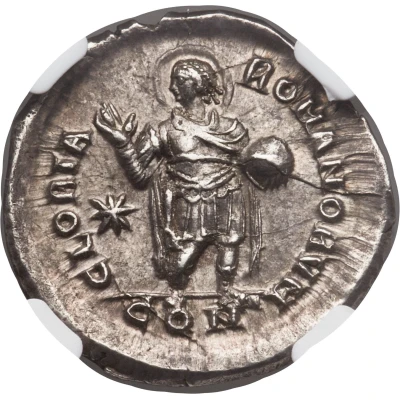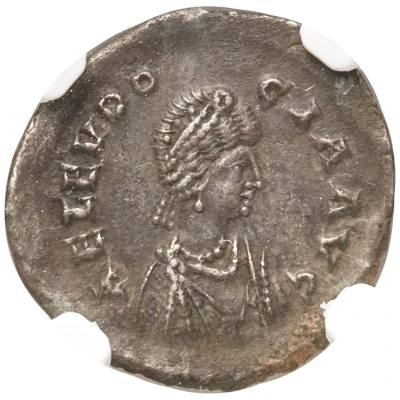
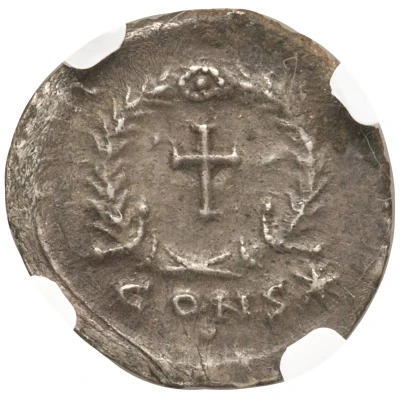

© Heritage Auctions
Siliqua - Aelia Eudocia Cross within wreath; Constantinopolis
| Silver | 1.98 g | 18 mm |
| Issuer | Eastern Roman Empire (Rome) |
|---|---|
| Empress | Eudocia (Ælia Licinia Eudoxia) (421-443) |
| Type | Standard circulation coin |
| Years | 430-438 |
| Value | 1 Siliqua (1⁄24) |
| Currency | Solidus (330-476) |
| Composition | Silver |
| Weight | 1.98 g |
| Diameter | 18 mm |
| Shape | Round (irregular) |
| Technique | Hammered |
| Orientation | Variable alignment ↺ |
| Demonetized | Yes |
| Updated | 2024-10-10 |
| Numista | N#373319 |
|---|---|
| Rarity index | 100% |
Reverse
Cross within wreath terminating in large jewel; mintmark in exergue.
Script: Latin
Lettering: CONS
Comment
Aelia Pulcheria was an Eastern Roman empress who advised her brother emperor Theodosius II during his minority and then became wife to emperor Marcian from November 450 to her death in 453.She was the second child of Eastern Roman Emperor Arcadius and Empress Aelia Eudoxia. In 414, the fifteen-year old Pulcheria became the guardian of her younger brother Theodosius II.
When Theodosius was killed in a riding accident in AD 450, Pulcheria briefly ruled as sole empress before bowing to demands that she marry and thus chose a suitable man to rule as Augustus.
Variants are known, under this reference along with other references, given the types of ties of the wreath on reverse:
From RIC Volume 10
Interesting fact
One interesting fact about the Siliqua - Aelia Eudocia coin is that it features a cross within a wreath on one side, which symbolizes the Christian faith that was prevalent during the Eastern Roman Empire. This coin was minted during the reign of Emperor Theodosius II, who was known for his strong support of Christianity and his efforts to establish it as the dominant religion of the empire. The coin's design reflects the religious and political climate of the time, and it serves as a reminder of the significant impact that Christianity had on the Roman Empire.
